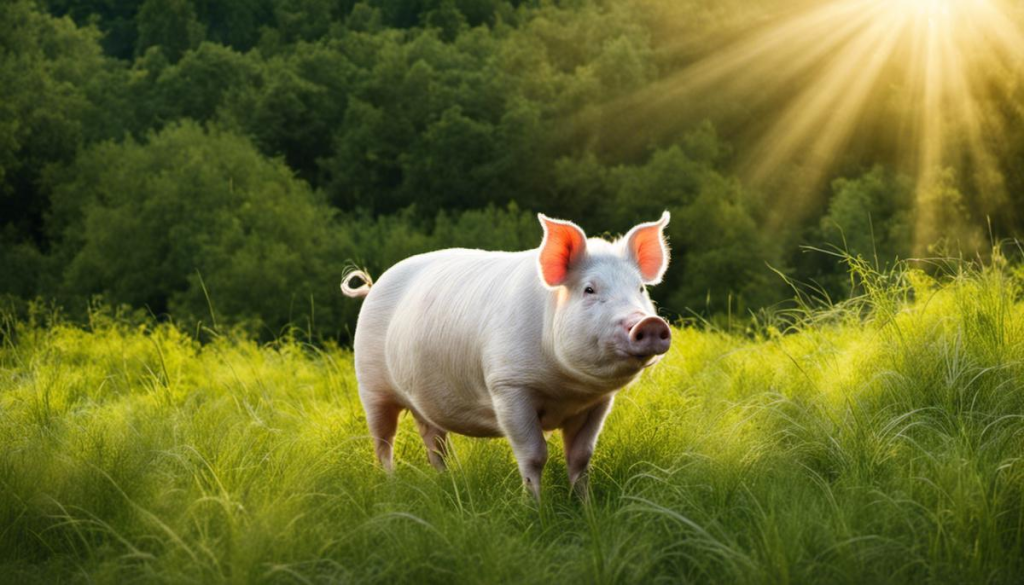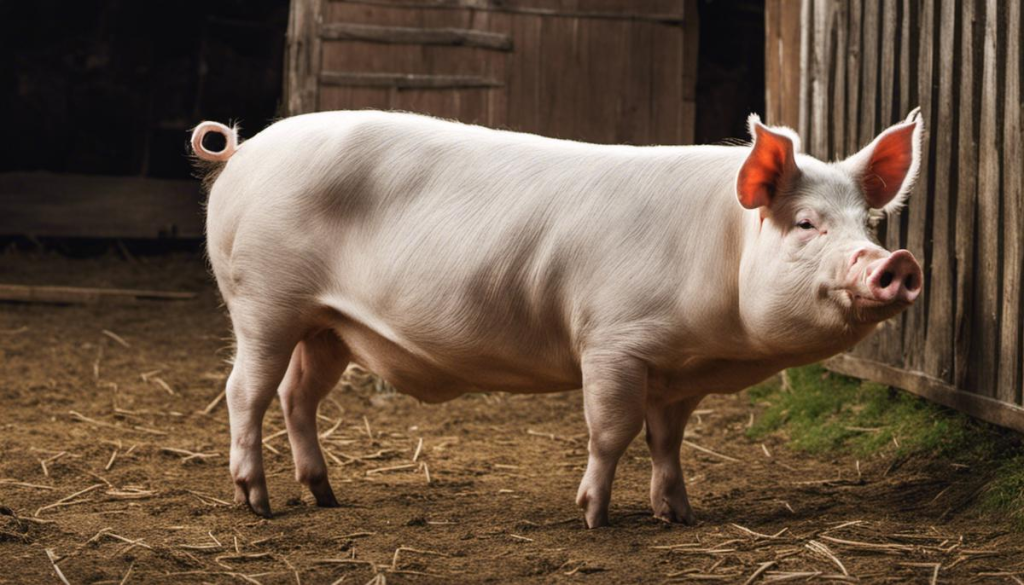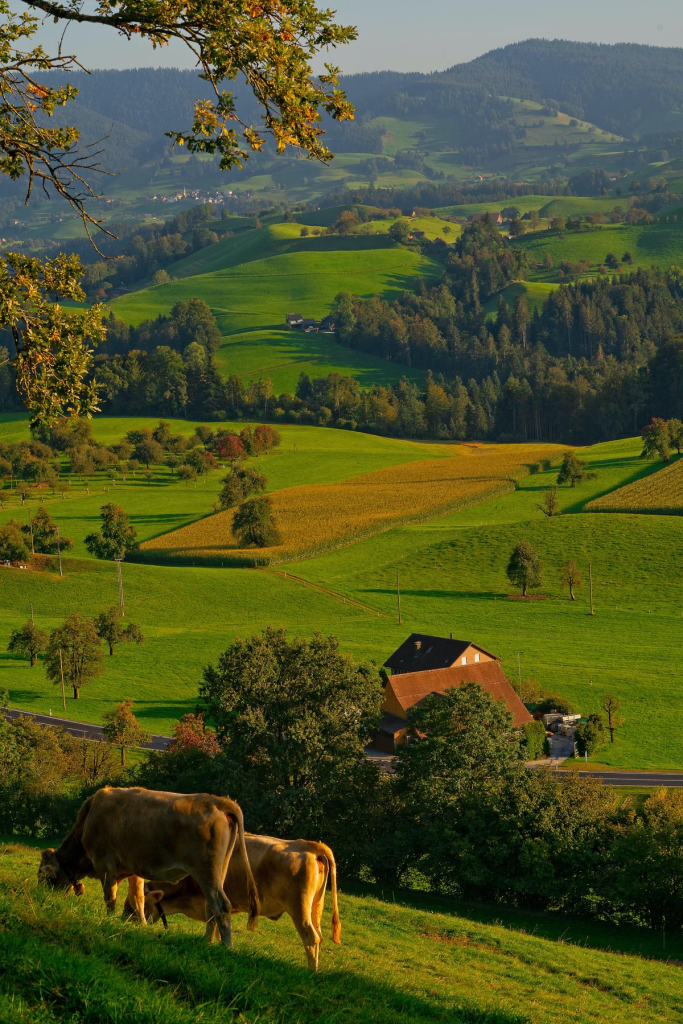The Chester White pig, humble in its background, yet deeply significant in the context of modern agriculture, abounds with a rich heritage, strikingly distinct characteristics, and a noteworthy place in today’s livestock production. Originating from select US counties in the early 19th century, this breed quickly drew recognition for its exceptional traits. Tracing the compelling narrative of the Chester White pig means delving into the core of agricultural history, uncovering the breeders’ pursuits, and recognizing the seemingly indistinguishable choice of breed that now sits at the vanguard of pig livestock farming worldwide. Characteristics such as physical attributes, genetic traits, along with overview comparisons, carry individual merit, giving the Chester White pig an unrivaled edge in farming and livestock production. Embracing such diversity and deeper understanding of its role in modern agricultural practices, the intriguing journey of the Chester White pig unravels the intertwining relationship between agricultural evolution and genetic selection.

The Origin and History of the Chester White Pig
Origins and Development of the Chester White Pig
The Chester White pig breed originated from Chester county, Pennsylvania, United States in the early 1800s. Notable for its solid white color, droopy ears, and large size, the breed was developed from a combination of the larger, English pigs and the smaller local American breeds available during that time. Early settlers crossed breeds like the Yorkshires or Tamworths with the smaller white domestic pigs, with an intention of producing a hearty breed that was well-suited to local conditions.
Key Figures in the Breed’s History
Key figures associated with the development of the Chester White pig include prominent Chester county farmers of the early 19th century. Nathan Hunt, who is often regarded as the “father of the Chester White pig,” played a significant role in the breed’s early development. His focused efforts to develop and propagate the breed made Chester Whites known throughout Pennsylvania and beyond. The Chester White Swine Record Association was founded in 1884 to record purebred Chester Whites and help in the promotion of the breed.
Characteristics of the Chester White Pig
The Chester White pig is known for its all white color, droopy ears, and substantial size, with mature males (boars) weighing between 600-1000 pounds, and mature females (sows) weighing between 500-700 pounds. They are a durable breed with a long body and a high rate of fertility, which makes them particularly attractive for commercial pig farming. Another important feature is their carcass quality. These pigs have a high proportion of lean meat and less back fat which makes their meat quite desirable.
Historical Spread and Popularity of the Chester White
Following its development, the Chester White pig rapidly grew in popularity and population in the United States during the 19th and early 20th century. Its adaptability to diverse climatic conditions and its excellent breeding and meat qualities made it favored among farmers and breeders.
During the 20th century, the breed spread internationally due to its suitability for intensive pig farming. Chester Whites were exported to other countries across the world, including Canada, Mexico, and parts of Europe and Asia. This wide spreading of the breed has made them one of the most prominent and significant breeds in global pig farming.
A Glimpse into the Past
One noteworthy piece of history involves a remarkable Chester White boar named “King David.” The highlight of the 1916 Iowa State Fair, King David weighed in at an impressive 1,070 pounds and was celebrated for his majestic size and strength. He serves as a lasting icon in the farming community, a testament to the high quality and extraordinary potential of the Chester White breed.

Physical and Genetic Characteristics of the Chester White Pig
Distinct Characteristics of the Chester White Pig
The Chester White pig is a domestic breed native to the United States, taking its name from Chester County, Pennsylvania where its development began in the early 19th century. Their main identifiable trait is their white skin, which plays a key role in their ability to withstand heat. Adult pigs are generally of a large breed, with sows tipping the scales at 600 to 800 pounds and boars reaching up as high as 900 pounds. They possess relatively long, deep bodies with broad backs and well-rounded hams, along with slightly drooping ears of medium size. It’s no wonder that a Chester White like King David could be such an attraction!
Genetic Traits of the Chester White Pig
Chester Whites are known for their superior genetic traits. This breed grows quite rapidly, making it economically valuable for commercial pig farming industries. They have a higher growth rate compared to other breeds, and are able to reach slaughtering weight in less time. Alongside this, Chester White sows are noted for their prolificacy and fertility – they are capable of producing large litters. This breed also boasts exceptional mothering abilities, which, combined with the high litter size, ensures high piglet survival rates.
As for health aspects, Chester Whites are generally hardy and have seemingly good resistance against common livestock diseases. This resistance makes the breed an appealing choice for pig farmers. Despite this, like all live animals, this breed still needs a well-maintained environment and regular check-ups to ensure optimal health.
Distinct Features and Comparison to Other Breeds
Among the diverse array of pig breeds, the Chester White pig is remarkable due to its speedy growth rate, abundant fertility, and hardiness. While similar in size and color to the Yorkshire pig, the Chester White’s growth process is generally quicker. Unlike the Berkshire or Duroc pigs known for their colored patches, the Chester Whites possess a uniform white coloration. However, it is vital to note that this uniform white characteristic can make them more prone to sunburn and may call for extra shade in intensely sunny and warm environments.
From a genetic viewpoint, Chester White pigs stand out with their impressive productivity. Despite the Large Whites exhibiting similar productivity levels, Chester Whites often birth larger litters and exhibit superior mothering skills. Other pig breeds like the Tamworth may have an edge in disease resistance and adaptation to a diverse range of climates, but they lack the Chester White’s impressive growth rate and extensive litter size.

The Chester White Pig in Modern Agriculture and Livestock
The Chester White Pig: A Unique American Legacy
The Chester White pig, a beloved part of the American pig industry, traces its roots back to Chester County in Pennsylvania, United States. The early 1800s saw the birth of this breed, a result of crossbreeding various white pig breeds introduced by settlers in the area. Through these early processes of cross-breeding, the modern Chester White pig emerged – an animal celebrated for its toughness, versatile adaptability, and exceptional production characteristics.
Characteristics of Chester White Pigs
Chester White pigs, as the name quite rightly suggests, are completely white in color with droopy ears. These medium to large-sized animals possess a robust and meaty body, which contributes to their high meat yield. Additionally, their ability to adapt to a variety of climate conditions, and an inherent resistance to diseases make them a preferred choice for pig farmers. Also, they showcase a rapid growth rate and possess a quiet and docile temperament, which makes them easy to manage.
Role in Today’s Agriculture Industry and Livestock Production
In modern-day agricultural practices, the Chester White pigs hold a pivotal position due to their high fertility rate and exceptional mothering abilities. They are renowned for their large litter sizes, often producing 10-12 piglets in a single birth and having two litters per year. This results in a rapid multiplication of stock and increases profits for farmers.
Quality and Type of Meat Produced
When it comes to meat, Chester White pigs are primarily raised for their high-quality pork and fat production. The meat produced by this breed is well marbled, tender, and characteristically flavorful, which adds to its demand in food production. The substantial size of the pigs ensures a sufficient quantity of meat, primarily used for the production of bacon, hams, and roasts.
Trends in Breeding and Raising Chester White Pigs
One of the key trends in breeding Chester White pigs revolves around genetic improvement. There is an increasing focus towards improving the breed’s genetics to boost their growth rate, litter size, and meat quality. New breeding technologies are being adopted, including artificial insemination, to enhance these characteristics further and improve the overall productivity and profitability of the breed.
Furthermore, today’s farming practices involve the humane handling of livestock. Animal welfare is becoming fundamental in raising Chester White pigs—appropriate housing, diet, health interventions, and low-stress handling techniques are being increasingly valued.
Chester White Pigs Around the World
Despite their American origin, Chester White pigs are reared globally due to their versatile characteristics. Their resilience to weather extremities and disease resistance make them suitable for varies climates and environments. They are popular across North America, Europe, and parts of Asia, contributing significantly to the global pork industry.
In summary, the Chester White pig is an economically important breed that offers numerous benefits to the agricultural industry. Through constant innovation, its valuable traits are being preserved and enhanced to meet growing global demand. Its high-quality meat production and efficient breeding capabilities make it a preferred breed for pig farming across the world.

Photo by rgaleriacom on Unsplash
Fast forwarding to today, this breed, which started from modest beginnings, now dominates the pig farming industry. Its notoriety stems from its versatile usage across various agricultural markets, coupled with its high-quality meat. The Chester White pig has managed to stand the test of time and continues to play a pivotal role in the livestock sector across the globe. With the continued innovative breeding practices and given its inherent attributes, the Chester White breed lays claim to an enduring legacy in modern livestock farming. As such, any discourse about livestock farming and the ensuing economic discussion remain incomplete without acknowledging the Cheater White pig, a breed that not only revolutionized pig farming but also ushered a new understanding of selective genetic breeding for optimized productivity. This deep dive into the Chester White pig’s history and characteristics highlights the intrigue and complexities inherent in breed development and paves the way for future farming advancements.